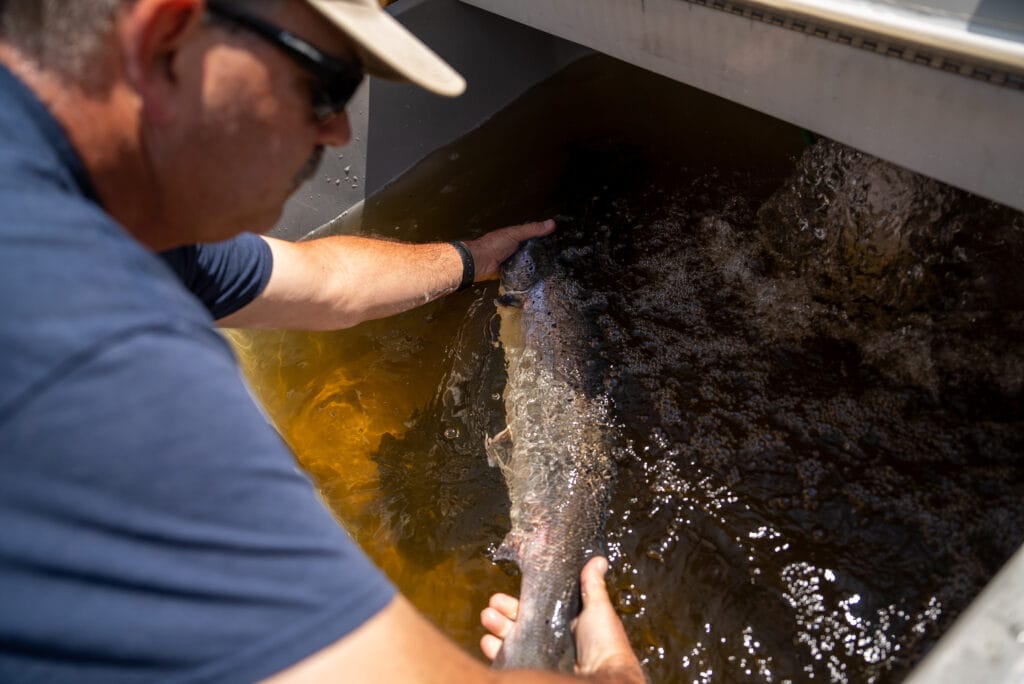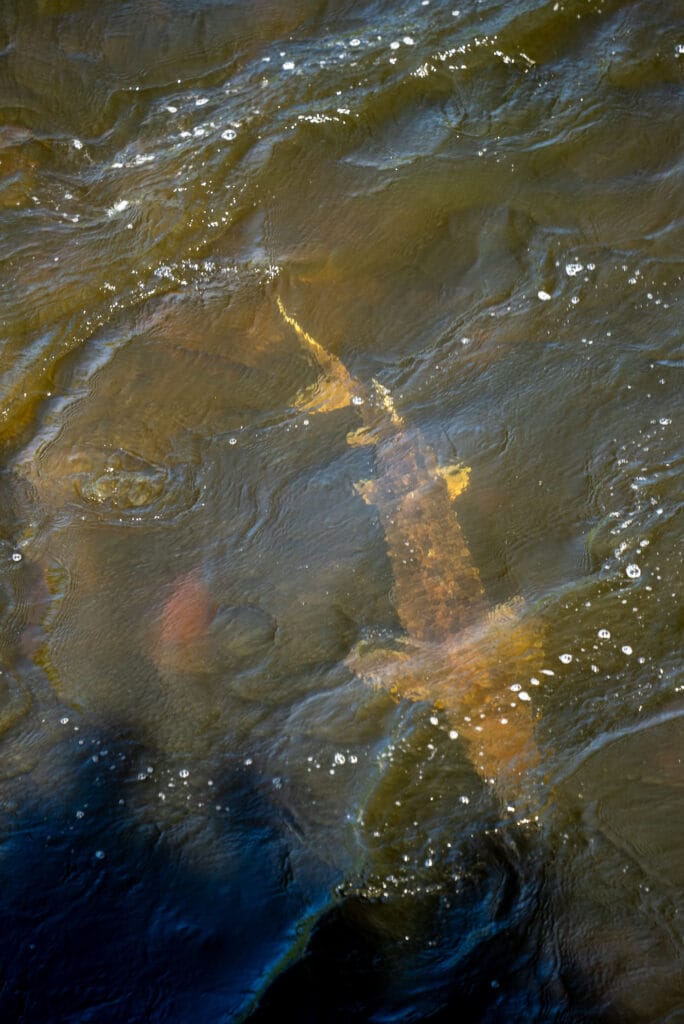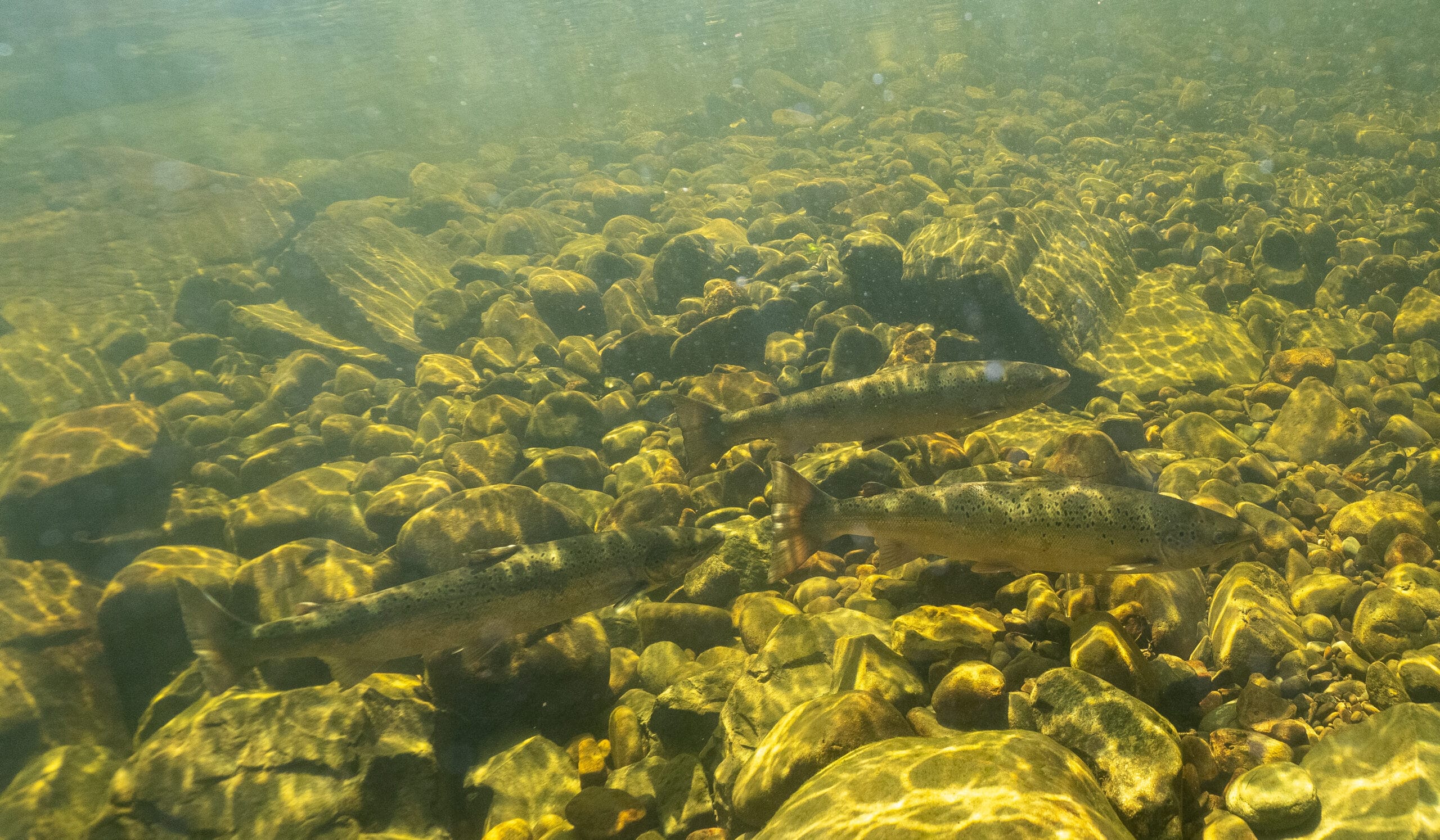This week, the Federal Energy Regulatory Commission released a Draft EIS affecting four hydroelectric dams on Maine’s Kennebec River. The FERC recommendations amount to incremental improvements over what is now a dire situation for Atlantic salmon in the Kennebec.
We have tried the incremental approach before on rivers like the Connecticut, Merrimack, Saco, and Androscoggin. It doesn’t work. We should all know better than to try it again on the Kennebec.
Low expectations lead to low performance. If the goal were simply to stave off extirpation of Kennebec River salmon for a little while longer, incremental improvements might be acceptable.
That is not our goal.
Our goal is to recover healthy, abundant populations of Atlantic salmon, and that goal is within reach on the Kennebec.

Success within reach
The Sandy River watershed in the Kennebec headwaters has exceptional habitat and water quality and is projected to be resilient in a future influenced by climate change. A successful Atlantic salmon egg planting program in the Sandy River has shown it to be highly productive for spawning and rearing.
If we can get salmon to and from the Sandy River, we can recover Atlantic salmon in the Kennebec, which was recently selected as one of Trout Unlimited’s Priority Waters in Maine.
In the 1970s, the Kennebec was so badly polluted that most people didn’t want to go near it. After passage of the Clean Water Act, and as we started to clean up the river, intrepid anglers discovered that it still held striped bass, trout and even an occasional salmon.
As it turned out, the Kennebec’s full suite of native fish was still hanging on: Atlantic and shortnose sturgeon, American eels, striped bass, alewives, river herring, lamprey, and a small population of Atlantic salmon.
Inspired by the resilience of these fish, advocates began to dream about the possibilities.
The recovery that followed the removal of the Edwards Dam in 1999 made some of those dreams a reality, as the lower Kennebec now holds enough alewives and river herring to support a large commercial fishery while still maintaining runs of 3-5 million fish per year. This past summer, enormous Atlantic sturgeon crowded into Cobbossee Stream in Gardiner, spawning in a stream that was unreachable before Edwards Dam came down.

Recovery is possible.
When the future of the Edwards Dam was under consideration, it had been so long since the Kennebec had seen healthy runs of fish that nobody knew how productive the river could be. Today, we have the success of the Edwards Dam removal and the promise of the Sandy River egg planting program to show us the way.
It’s not a leap of faith. It’s a simple choice. On one side, we can settle for temporarily delaying extirpation to protect less than approximately 0.4% of Maine’s net power supply. Or we can achieve one of the world’s great anadromous fish recoveries.
To learn more about the Kennebec River and the challenges facing its Atlantic salmon and other migratory species, visit TU.org/Kennebec. Stay tuned to TU.org and TU’s social media channels on Facebook and Instagram for information on how you can join us us in advocating for the river’s recovery.



